Step back in time to view Pompeii in Nanshan
Writer: Cao Zhen | Editor: Zhang Chanwen | From: Shenzhen Daily | Updated: 2023-06-21

Visitors observe a replica of the "Seated Hermes" sculpture in the entrance to the "Love, Luxury and Beauty in Classical Antiquity — Masterpieces From the Museo Archeologico Nazionale di Napoli" exhibition at Nanshan Museum. Photos by Cao Zhen
The Nanshan Museum is offering visitors a unique opportunity to travel back in time and experience the ancient Roman city of Pompeii through its latest exhibition, “Love, Luxury and Beauty in Classical Antiquity — Masterpieces From the Museo Archeologico Nazionale di Napoli.”
The free exhibition features a stunning collection of 128 antiquities that capture the essence of ancient Roman life, including marble and bronze sculptures, pottery, frescoes and glassware from the Naples National Archaeological Museum in Italy.
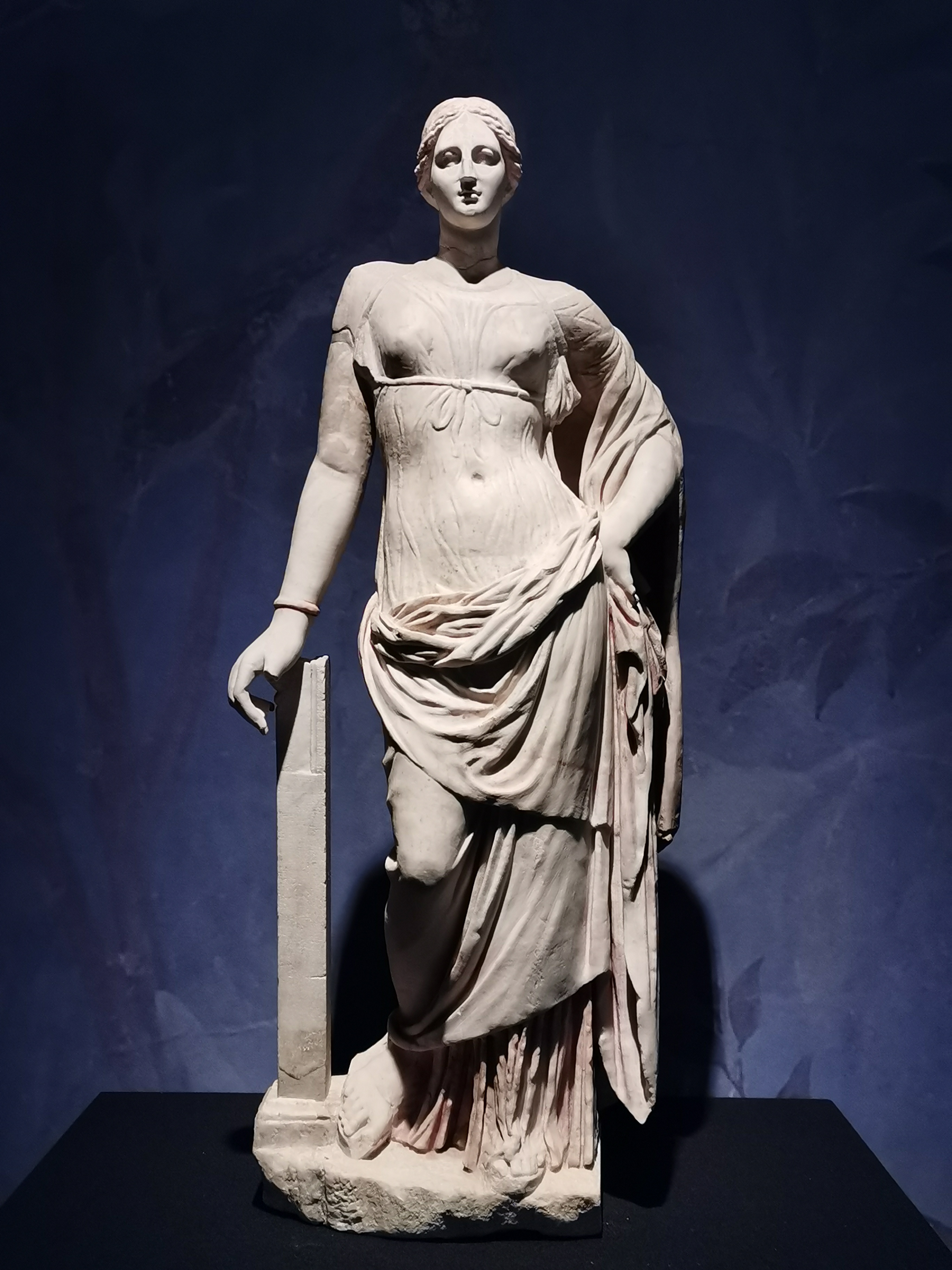
Marble sculpture “Aphrodite Marina” (1st century).
While there are many facets of Pompeii to explore, including its architecture, religion, commerce, and entertainment, this exhibition highlights the ancient city’s luxurious and enchanting lifestyle and shines a light on the love, desire and beauty in ancient Greek and Roman cultures. The mesmerizing display offers visitors a glimpse into Pompeii before it was lost for centuries following the calamitous eruption of Mount Vesuvius in A.D. 79.
As visitors enter the exhibition, they are greeted by replicas of the “Seated Hermes” and “Dancing Faun” bronze sculptures, originating from opulent houses in the cities of Herculaneum and Pompeii, respectively. Both cities were destroyed during the volcanic eruption. The houses, boasting stunning gardens, multiple amenities and numerous lavish rooms adorned with frescoes, mosaics and other artworks, represent the exquisite lifestyle that was once prevalent among the upper classes.

Fresco “Dancing Maenad” (1st century).
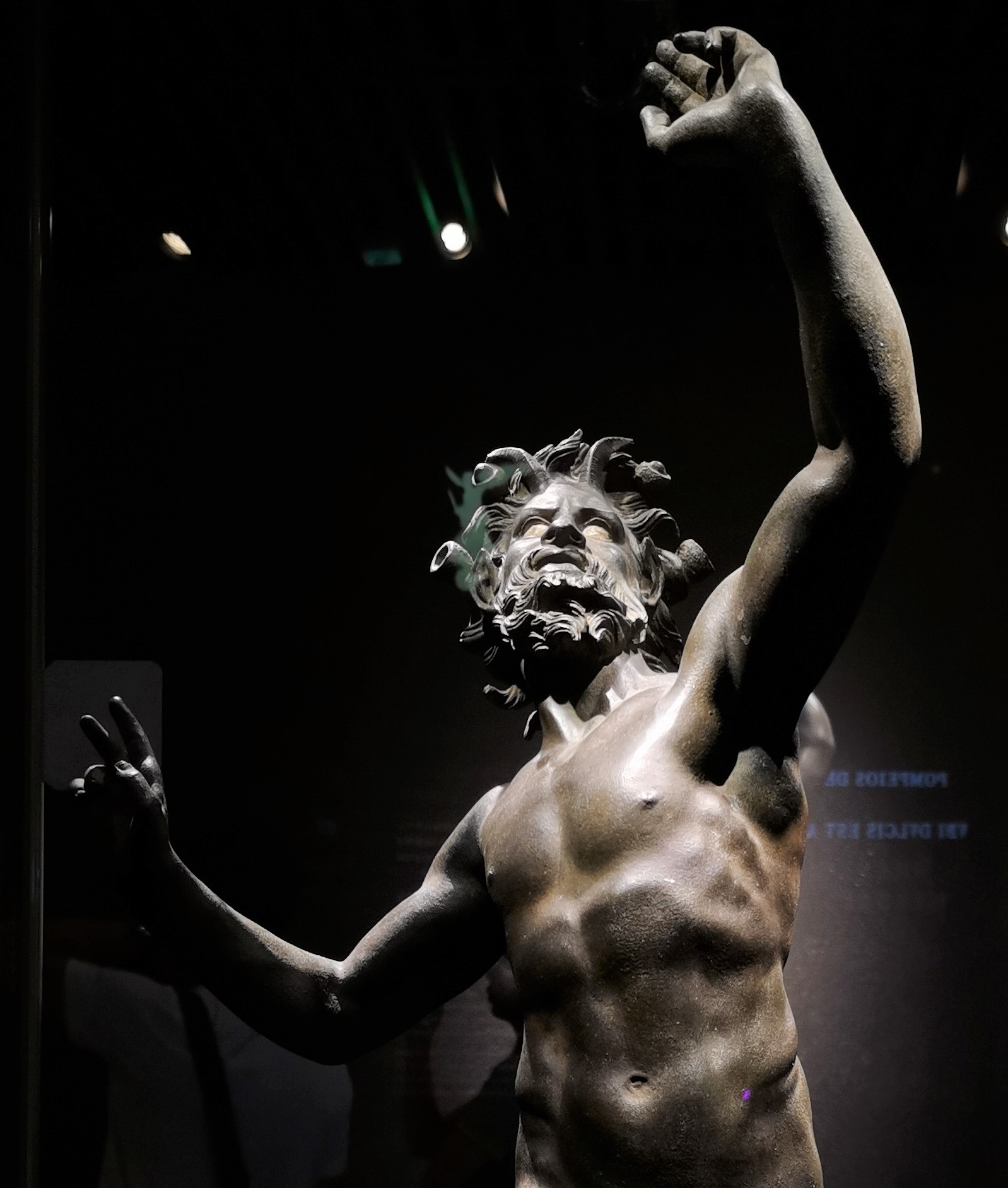
A replica of the "Dancing Faun" sculpture.
The “Dancing Faun” sculpture is notable for its extraordinary realism, including the intricately textured hair and the finely rendered muscular and facial features. The statue’s dynamic pose and fluid movement also make it an exceptionally striking work of art. The faun is a creature from Roman mythology that was often associated with celebration, wine and merriment.
Many Pompeii frescoes, sculptures and pottery patterns were dedicated to celebrating the gods of love and desire, resulting in timeless human physical beauty. At the exhibition, visitors can admire marble statues of gods and goddesses, such as Pothos and Aphrodite (Venus), which exude a delicate and refined style.
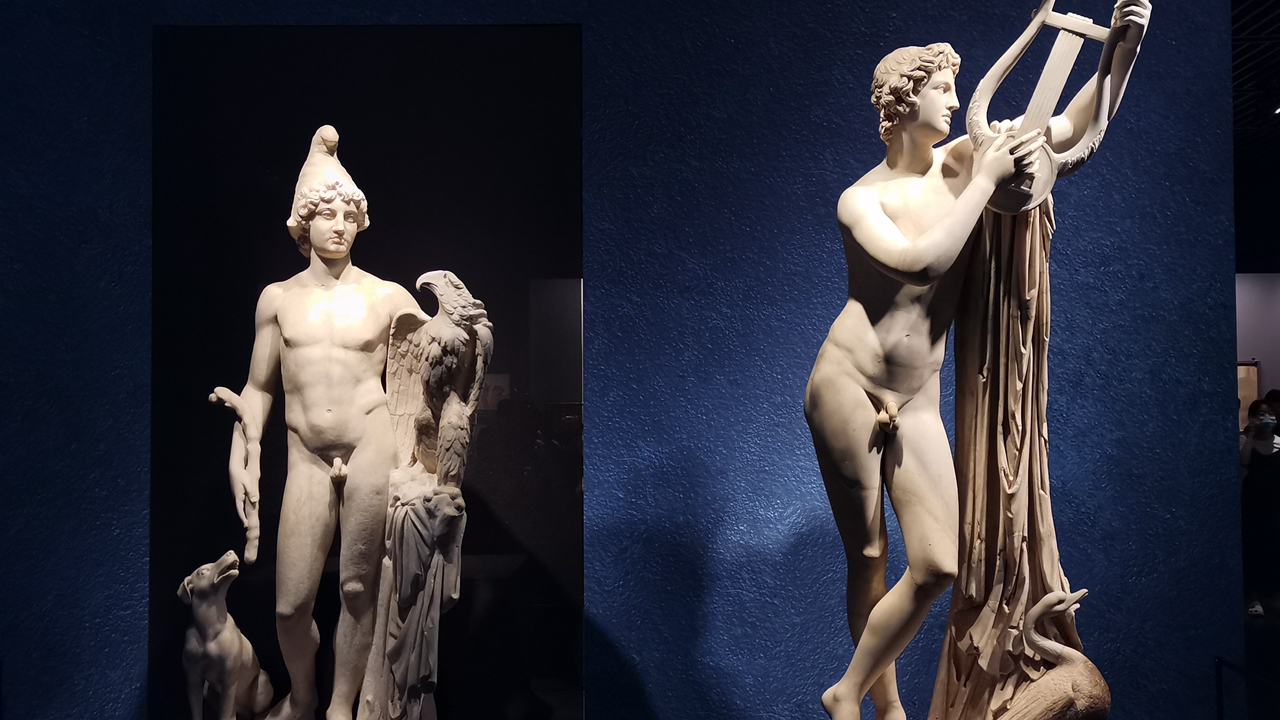
Marble sculptures “Ganymede With the Eagle” and “Pothos,” both from the 2nd century.
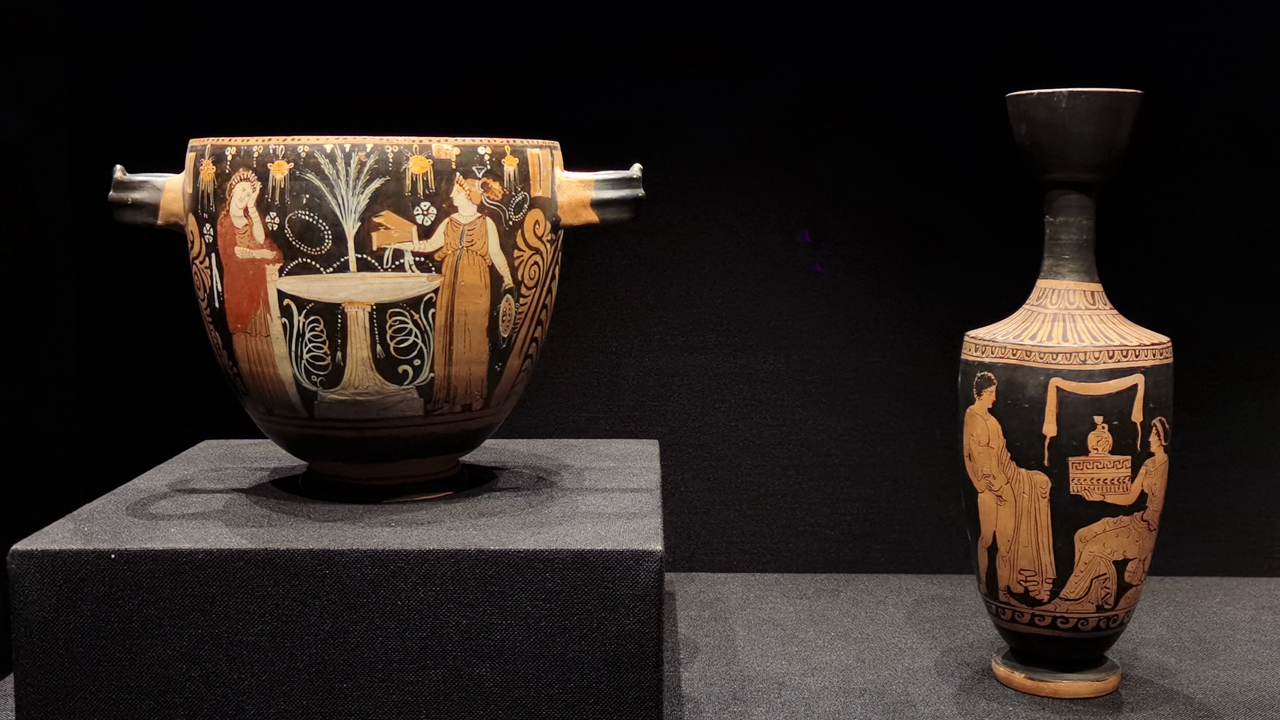
Pottery items, “Skyphos With Grooming Scene” and “Lekythos With Wedding Scene,” both from the 4th century B.C.
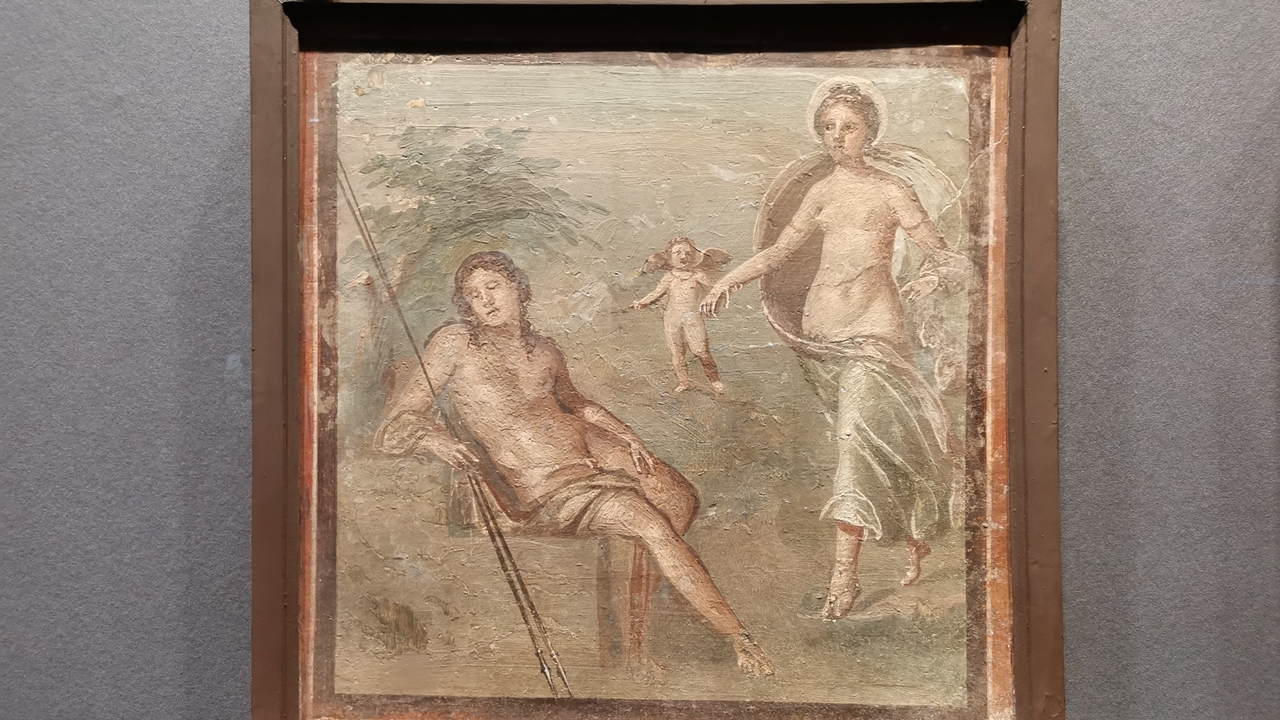
Fresco "Selene and Endymion" (1st century).
The sculptures’ harmonious balance and physical perfection embody the classical ideals of grace, charm and strength, further accentuated by the smooth surface of the marble that enhances their luminosity and sensuality. These captivating works, displayed in a dark exhibition room, create a stunning visual effect, drawing many visitors to record the grandeur through photography.
Dionysus, the Greek god of wine, and people’s banquet scenes, were also frequently depicted in Pompeii’s artworks. The significance of wine, dining and socializing in Pompeii had an impact on the city’s social interactions, making these subjects common themes throughout their art. The frescoes and potteries that depicted these also demonstrated the luxurious lifestyle of Pompeii’s upper class.
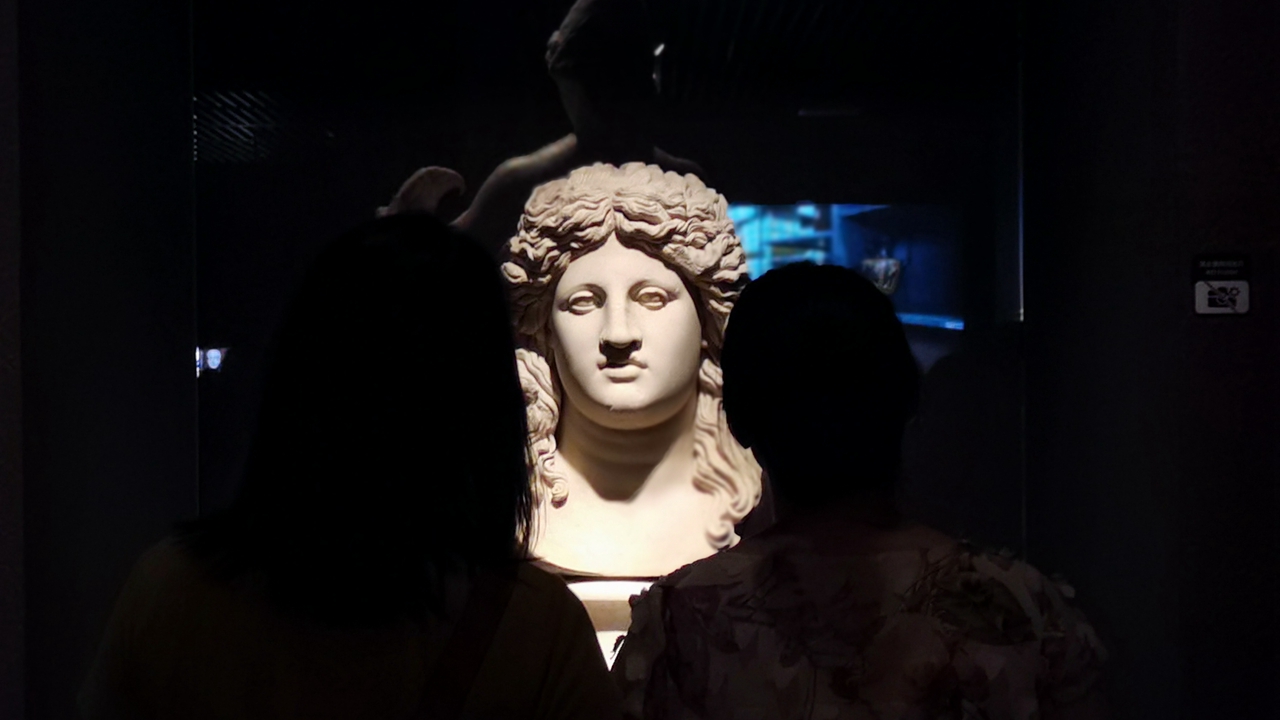
Visitors admire a marble sculpture of Dionysus' head (2nd century).
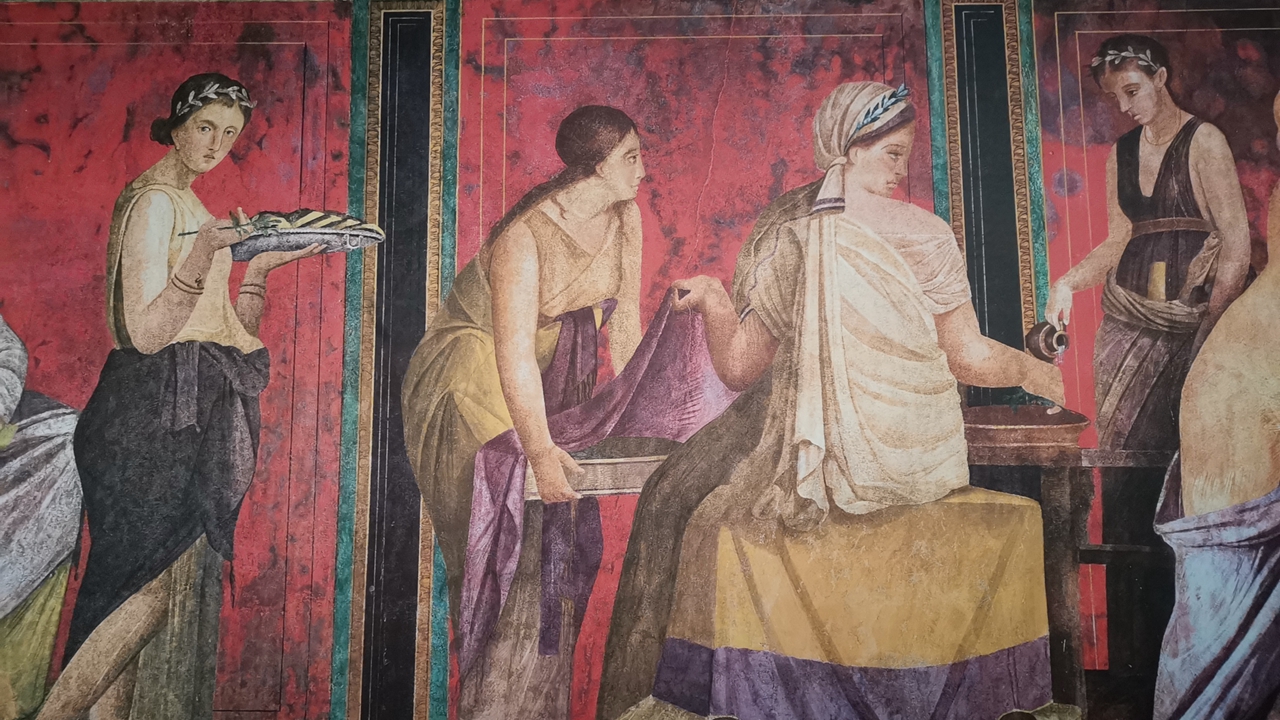
Part of a replica of a fresco.
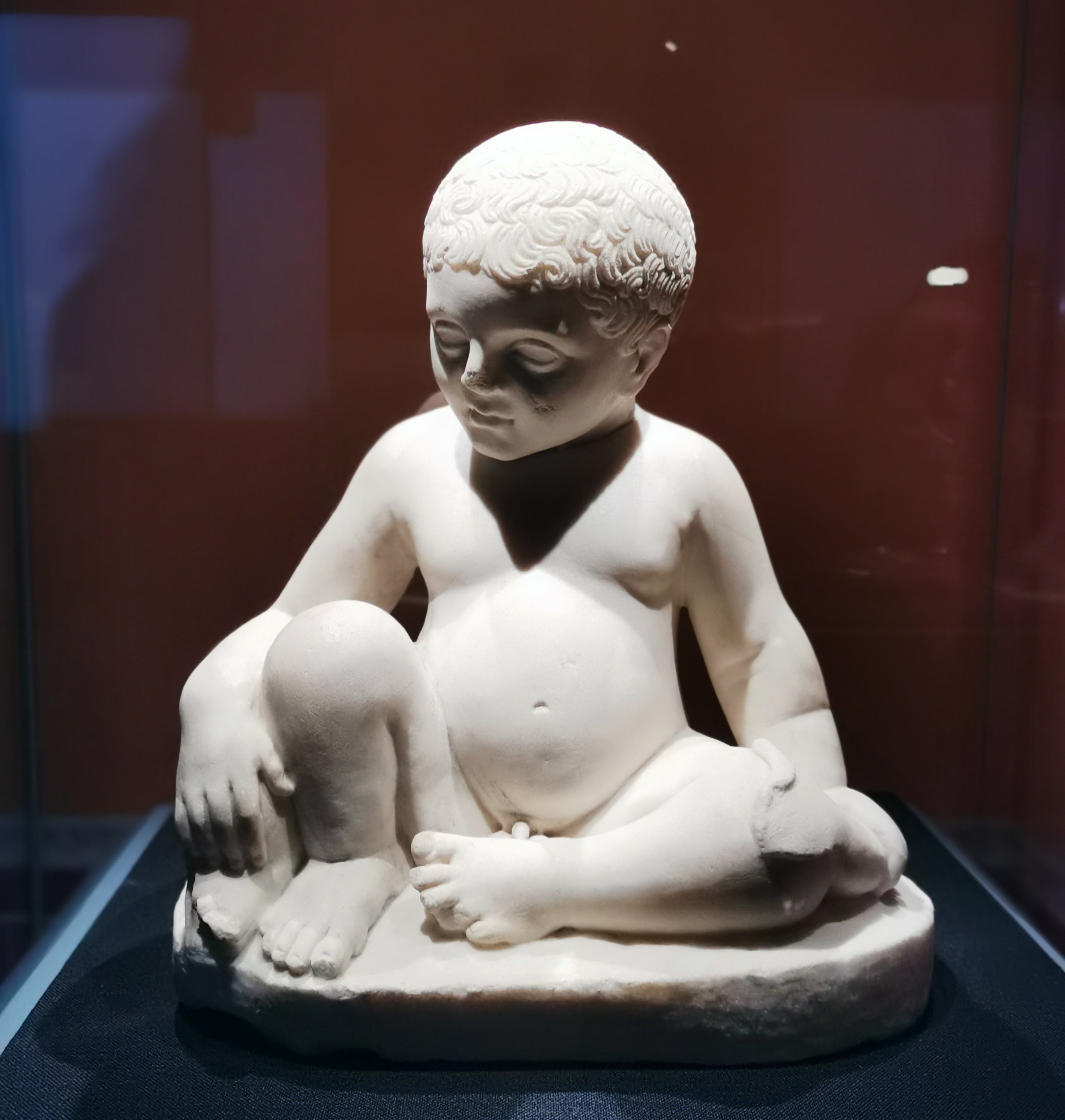
A marble fountain mouth in the shape of a youth with a dolphin (1st century).
The tragic end of Pompeii, buried under ash and pumice from the volcanic eruption, is also an integral aspect of the city’s legacy. Animated videos at the exhibition show how Pompeii was destroyed in the year 79, bringing viewers closer to that fateful day.
Many visitors are awed by a gypsum plaster cast of a young female Pompeii victim, crafted in the early 20th century. Her posture captures a poignant and haunting image of her final moment. Many Pompeii victim casts, created by pouring a mixture of plaster and water into the voids left by the bodies of those who perished in the eruption, convey expressions of fear, pain and desperation, adding a tangible and emotional connection to the human tragedy for modern viewers.
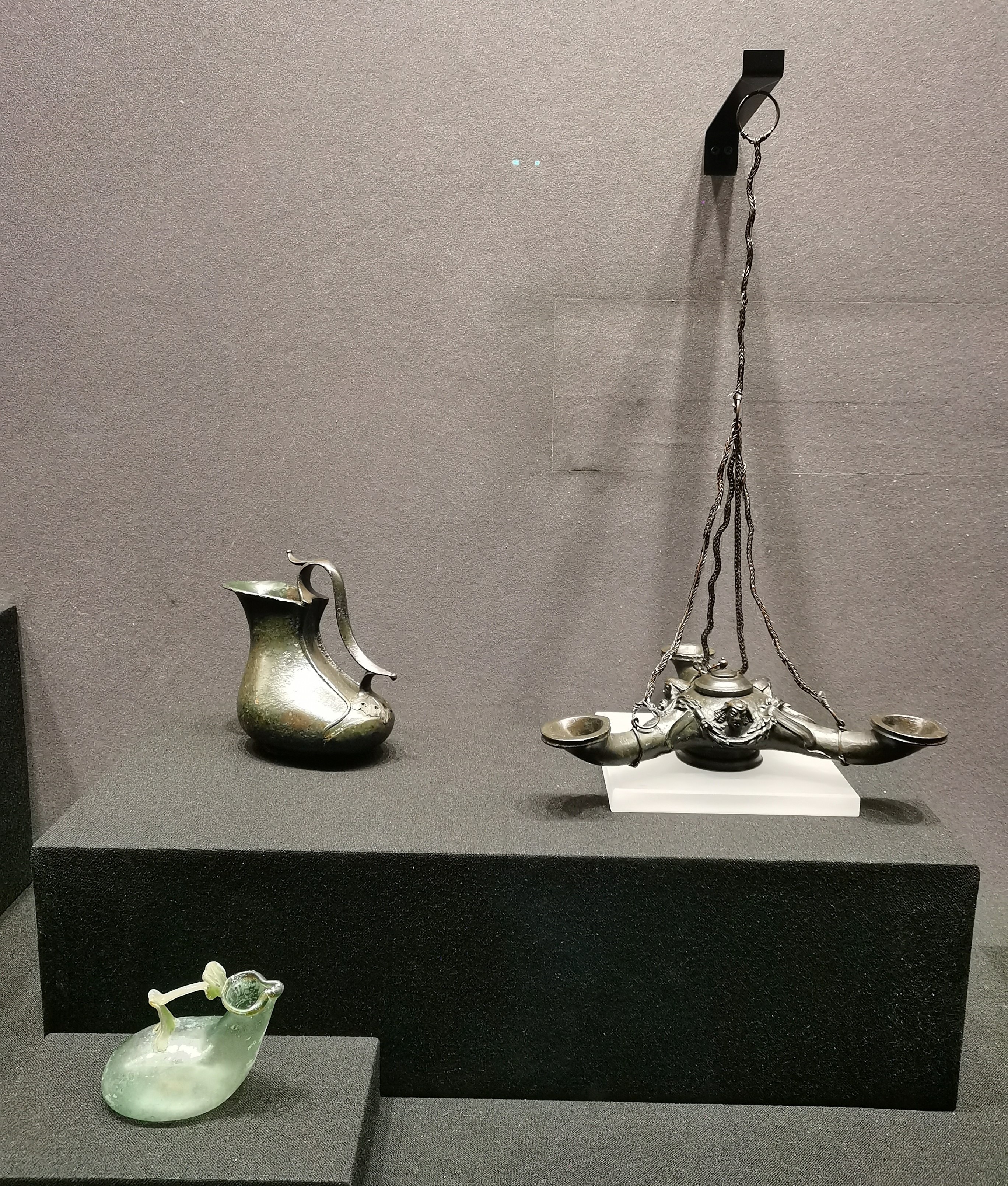
Bronze and glass askoi (ancient wine vessels) and a bronze hanging oil lamp, all from the 1st century.

A visitor takes photos in front of a screen showing Pompeii’s past splendor at Nanshan Museum. A gypsum plaster cast of a female Pompeii victim in front of the screen shows the final moment of the victim when she was buried in the volcanic eruption in A.D. 79.
Dates: Until Sept. 3
Booking: WeChat account “nanshanmuseum”
Venue: Nanshan Museum, Nanshan District (南山博物馆)
Metro: Line 1 or 12 to Taoyuan Station (桃园站), Exit B